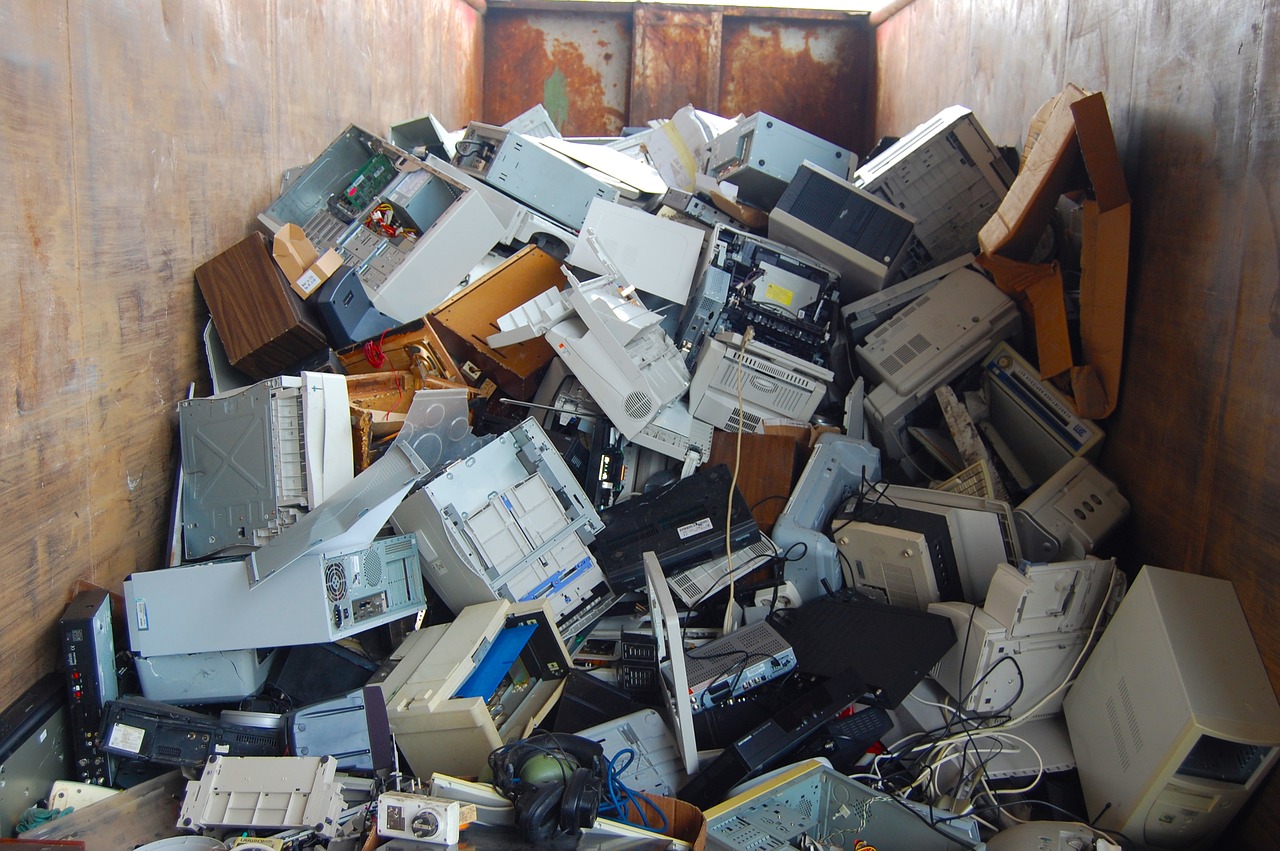There are many sources of waste on this planet, e-waste being one of the fastest-growing in today’s modern world. According to some calculations, we produce around 50 million tons of e-waste every year, and this number will only grow as electronics become more available and new generations start penetrating the market. So far, e-waste has not been very much talked about, but it’s time to start discussing it more and learning about its issues and actions we can do to prevent it.
What is e-waste?
Unfortunately, future e-waste is all around us, starting from the screen you’re reading this on. It hides in the tablet your kids use to stream cartoons, in your smart washing machine, in your Nest thermostat. Your laptops, copiers and servers at work will also become e-waste, and so will all the equipment that’s powering the internet—from its sources to your router at home.
So what is e-waste? E-waste includes electronic devices, both large and small (from a full room of giant servers powering the internet to your iPod Nano somewhere at the back of a drawer). Some of these items will be sent for recycling, but most of them will get tossed in the trash. When e-waste ends up in the trash and gets transported to landfills, it takes a toxic toll on the environment and the people who leave in it. And e-waste recycling isn’t 100% eco-friendly either. The process of e-waste disposal is highly polluting in every way.

The issue with e-waste
As stated above, scientists estimate that humans generate around 50 million tons of e-waste every year. This waste has many shapes—around 30% comes from small electronic devices (microwaves, cameras, shavers, etc.), around 28% is made up of larger items (washers, dryers, freezers, refrigerators, ACs, etc.) and the rest of the garbage is smart devices (smartphones, computers, laptops, TVs, tablets, etc.) The fact that high-tech devices need to have many different elements to work makes recycling very hard. Disposal is impossible since many of the aforementioned elements are toxic.
During disposal, e-waste gets buried in landfills, so toxic chemicals seep into the ground, contaminating soil and local water supplies. Landfills like this not only affect the environment but also the health and wellbeing of people who live in nearby communities. In some cases (luckily, rarely) e-waste is burned. This process releases toxins into the air to be breathed by the locals, causing a fatal combination of environmental catastrophes.
Is recycling an option?
Reusing and repurposing e-waste is a priority in many communities and affected countries. However, this process is also harmful to the people who are employed in breaking electronics by hand, often without protection. Places without regulated dumping of e-waste face ecological disasters and health disasters due to pollution of land and water, and transporting of the devices further complicates our carbon emission issues. Recycling is an option, though, even though not an easy one. With small recycling facilities equipped with practical conveyors, shredders and ballers from Waste Initiatives, communities can achieve safer and more effective recycling. These microfactories can provide workers with practical ways to recycle e-waste. With a few tweaks, these facilities can also transform the recycled waste into useful materials like 3D printing filament.

The right to repair
In many places in the world, the right of consumers to repair the products they’ve paid for is gaining traction, especially in the US and Europe. The European Union is making great progress in the legality and ability to provide users with the right to pair, mainly to reduce e-waste by extending the longevity of products. According to law, larger electronics like TVs and monitors that appear on the EU market must be made to be repaired for at least 10 years. This means that the manufacturer has to guarantee the production of spare parts. This is a great way for consumers to reduce waste and resource consumption, as well as save up some money.
Hopefully, we won’t be drowning in microchips and cables in the future. Green initiatives focusing on e-waste will do their part, but large manufacturers are the one’s having to make the first step towards a green future.
